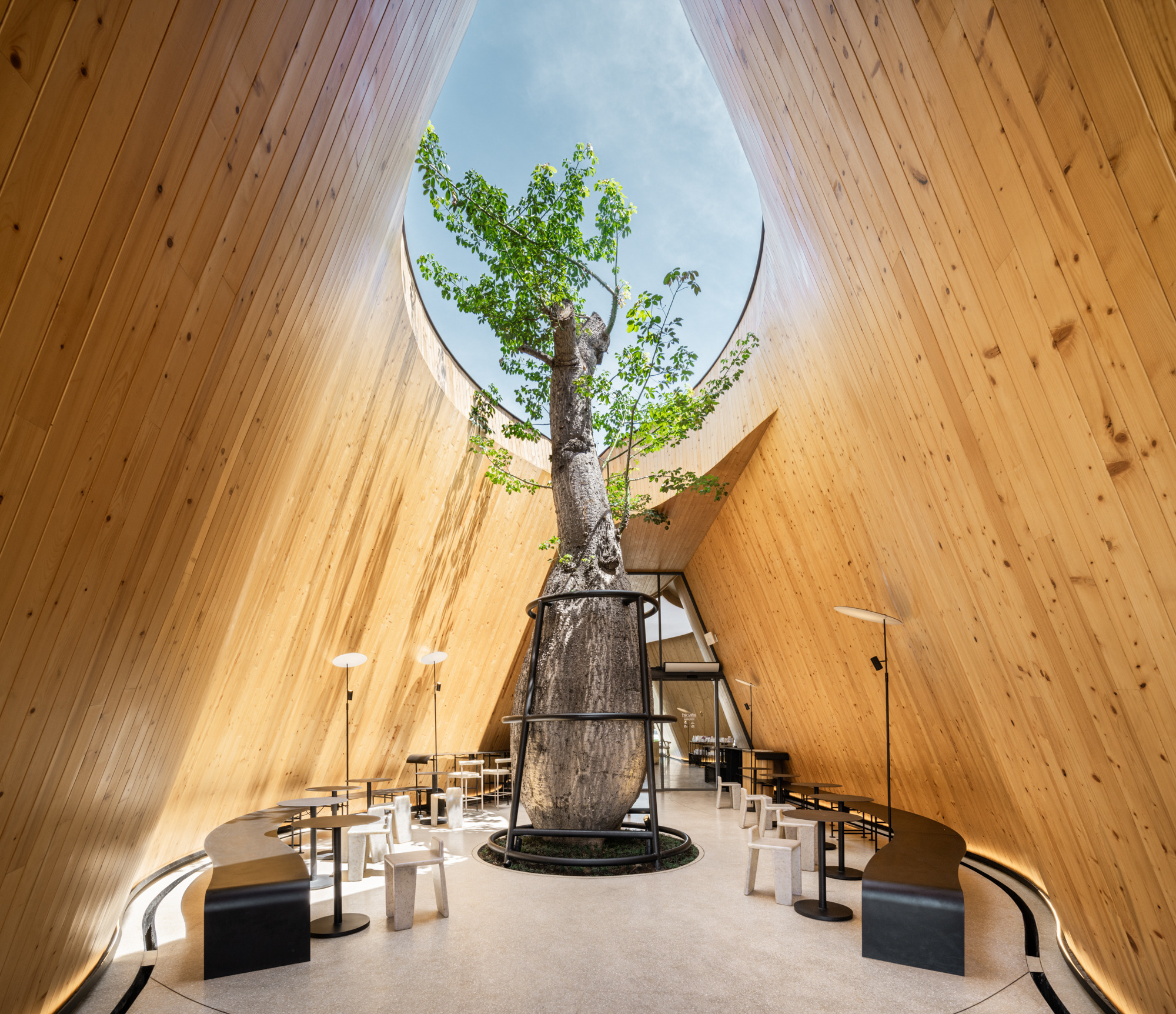This post was originally published on Colossal
All images © IDIN Architects
In the beachside town of Chonburi, Thailand, a slithering, twin-gabled building takes shape in a grove of trees. Home to a coffee shop called Harudot, the design is the fruit of a collaboration between a coffee roaster and a landlord who sells exotic plants. IDIN Architects conceived of a building that merged form and function, creating inviting spaces to sit and meet while placing nature at the apex both physically and conceptually.
Harudot’s vaulted interior is clad in warm, natural pine, and large oval apertures in the ceiling let in abundant light that sustains indoor trees. Outside, smooth, black panels silhouette a graceful, curvaceous form punctuated with two tall peaks that literally bring nature inside.
Explore more of the firm’s ambitious projects on its website.






Do stories and artists like this matter to you? Become a Colossal Member today and support independent arts publishing for as little as $5 per month. The article Looking Sharp: Twin Gables Invite Light and Nature Indoors at This Destination Coffee Shop appeared first on Colossal.




0 Comments